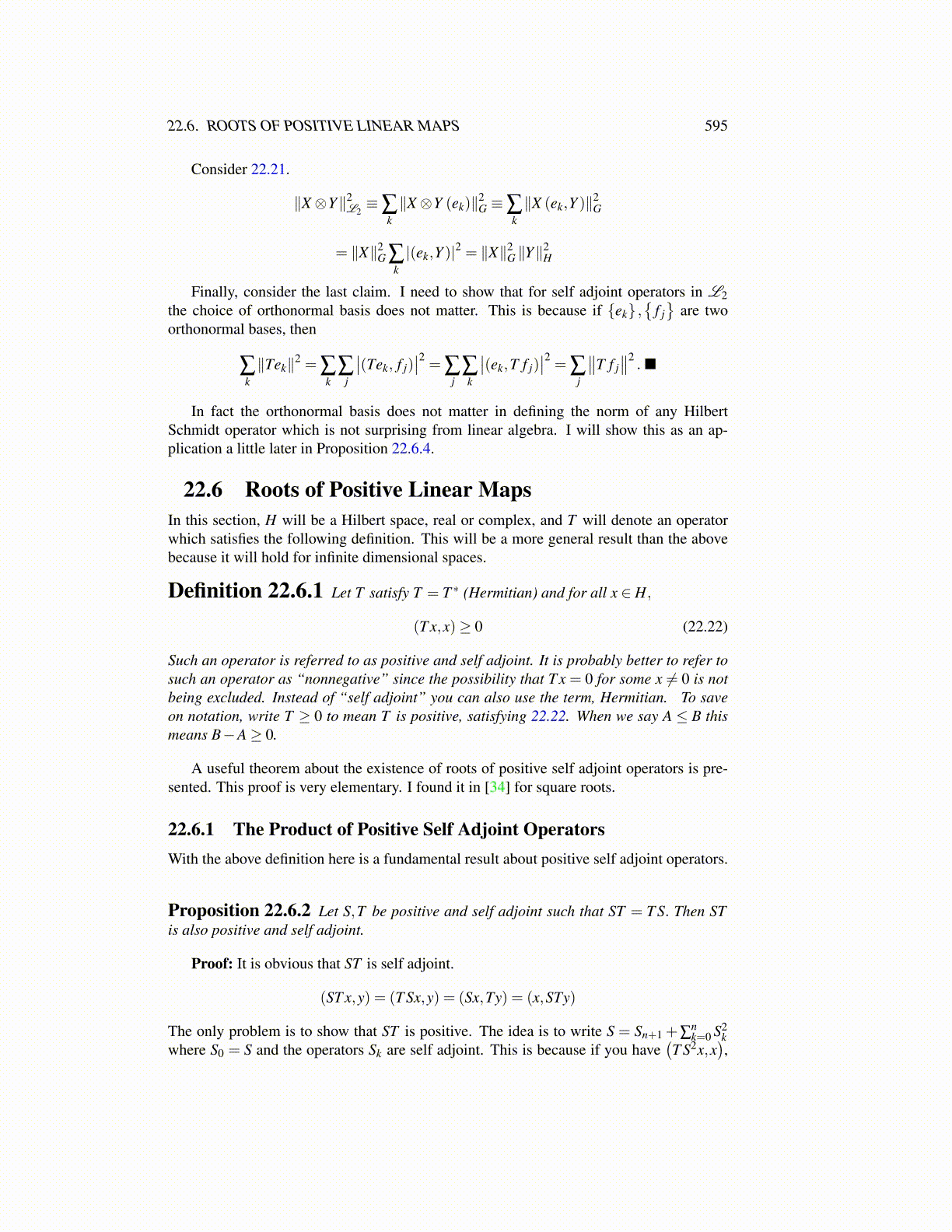
22.6. ROOTS OF POSITIVE LINEAR MAPS 595
Consider 22.21.
∥X⊗Y∥2L2≡∑
k∥X⊗Y (ek)∥2
G ≡∑k∥X (ek,Y )∥2
G
= ∥X∥2G ∑
k|(ek,Y )|2 = ∥X∥2
G ∥Y∥2H
Finally, consider the last claim. I need to show that for self adjoint operators in L2the choice of orthonormal basis does not matter. This is because if {ek} ,
{f j}
are twoorthonormal bases, then
∑k∥Tek∥2 = ∑
k∑
j
∣∣(Tek, f j)∣∣2 = ∑
j∑k
∣∣(ek,T f j)∣∣2 = ∑
j
∥∥T f j∥∥2
.■
In fact the orthonormal basis does not matter in defining the norm of any HilbertSchmidt operator which is not surprising from linear algebra. I will show this as an ap-plication a little later in Proposition 22.6.4.
22.6 Roots of Positive Linear MapsIn this section, H will be a Hilbert space, real or complex, and T will denote an operatorwhich satisfies the following definition. This will be a more general result than the abovebecause it will hold for infinite dimensional spaces.
Definition 22.6.1 Let T satisfy T = T ∗ (Hermitian) and for all x ∈ H,
(T x,x)≥ 0 (22.22)
Such an operator is referred to as positive and self adjoint. It is probably better to refer tosuch an operator as “nonnegative” since the possibility that T x = 0 for some x ̸= 0 is notbeing excluded. Instead of “self adjoint” you can also use the term, Hermitian. To saveon notation, write T ≥ 0 to mean T is positive, satisfying 22.22. When we say A ≤ B thismeans B−A≥ 0.
A useful theorem about the existence of roots of positive self adjoint operators is pre-sented. This proof is very elementary. I found it in [34] for square roots.
22.6.1 The Product of Positive Self Adjoint OperatorsWith the above definition here is a fundamental result about positive self adjoint operators.
Proposition 22.6.2 Let S,T be positive and self adjoint such that ST = T S. Then STis also positive and self adjoint.
Proof: It is obvious that ST is self adjoint.
(ST x,y) = (T Sx,y) = (Sx,Ty) = (x,STy)
The only problem is to show that ST is positive. The idea is to write S = Sn+1 +∑nk=0 S2
kwhere S0 = S and the operators Sk are self adjoint. This is because if you have
(T S2x,x
),